When we use the term “legend” in Formula 1, it is ordinarily about the drivers that win the races and championships on track having risked life and limb in the process. However, occasionally, it can also encapsulate the personnel working behind the scenes and particularly the team owner. Sir Frank Williams is one and Ken Tyrrell is unquestionably another.
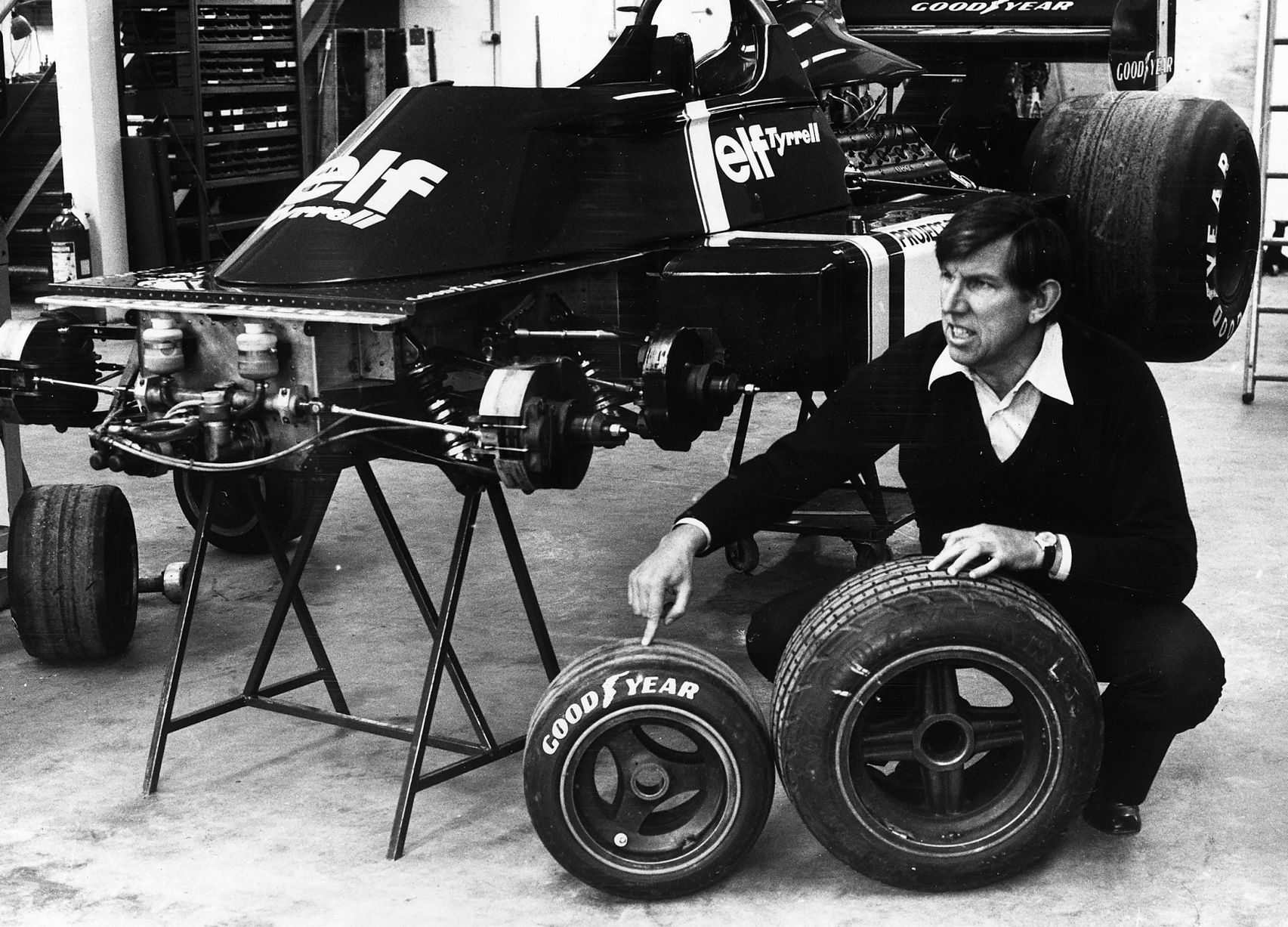
Ken, the last of romantics in Formula 1. “He was a dinosaur and I say that in the nicest possible way, because we will never see the life of Ken Tyrrell again.“ Murray Walker.
Tyrrell fought against a mountain to keep together his squad, a real family, in the era of the advent of F1 sponsors, as long as he could. He left his example of life and management. He won with a small team, very few did.
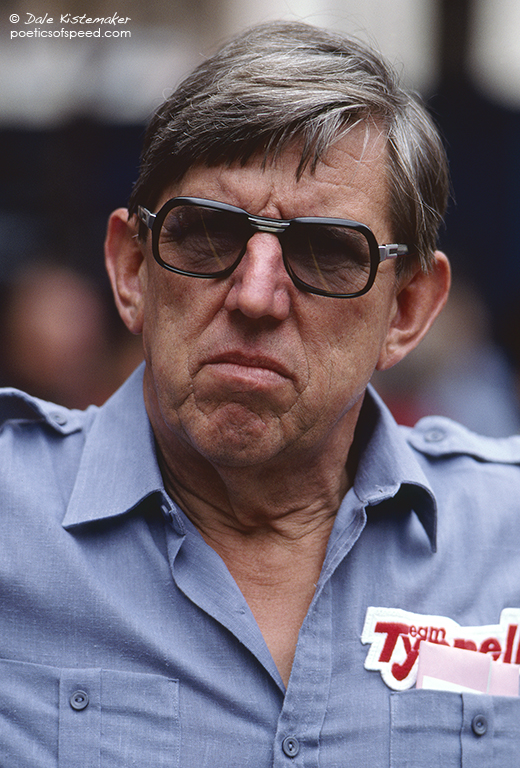
He marked the racing world with his cutting-edge cars. We are talking about a driver but, above all, a very good manager with the nose to discover talents.
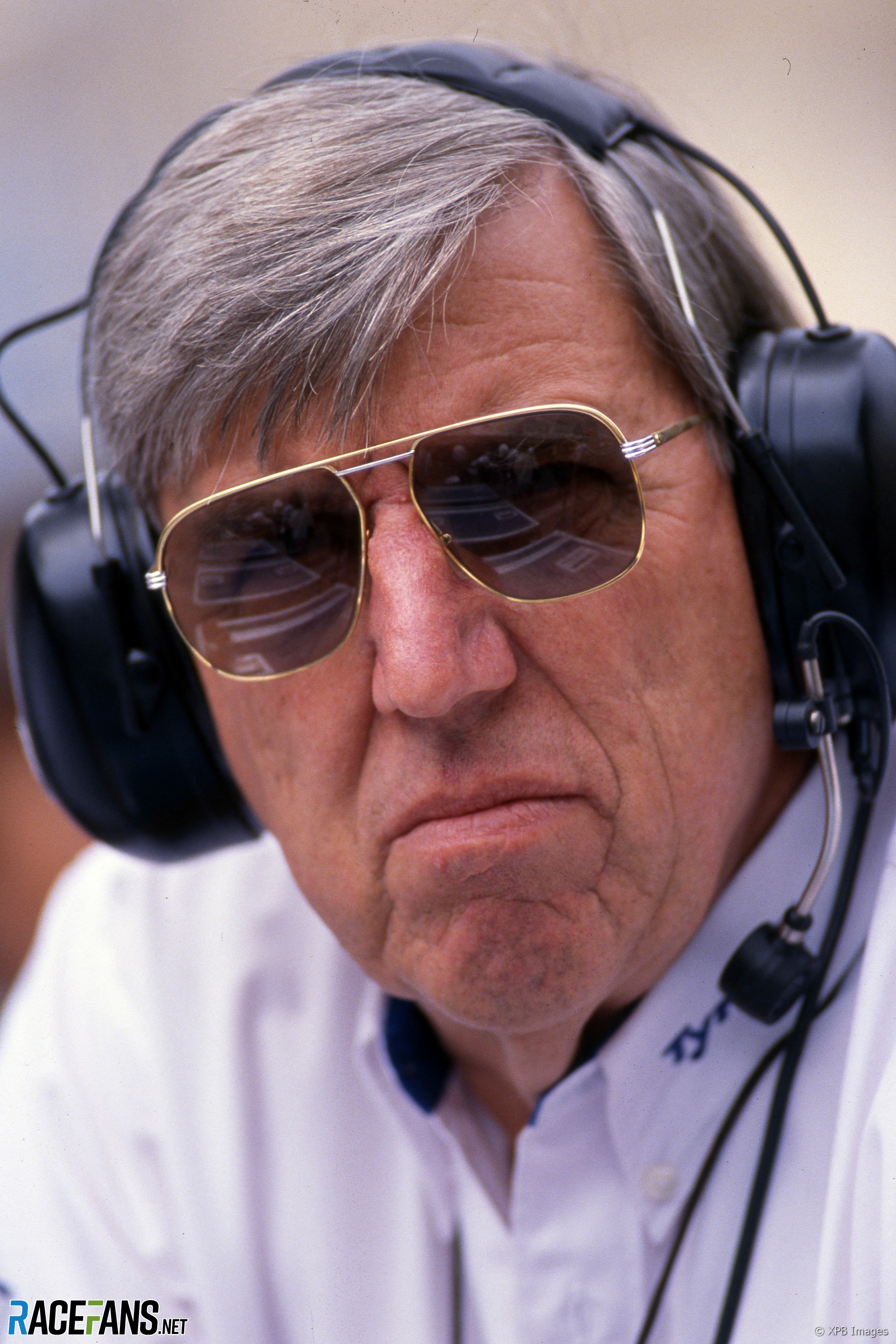
One of the longest-lived figures in the history of Formula 1, he has seen the Circus evolve over the decades. Tyrrell has in fact passed from the heroic years of the 'garage owners' to the decade symbolic of technological research, the 90s. In his endless career he has experienced world title seasons and then slowly slipped towards the less noble positions of the grid, without however that the team that bore his name ever lost the charm acquired in the past.
The dominator of F1 in the late 60's and early 70's, Ken was able to bring some important technological innovations to the Circus.
In the early 90s, with the hiring of Harvey Postlethwaite, Tyrrell will be the first to field a single-seater with a raised nose on the track, then giving a lesson to rivals.
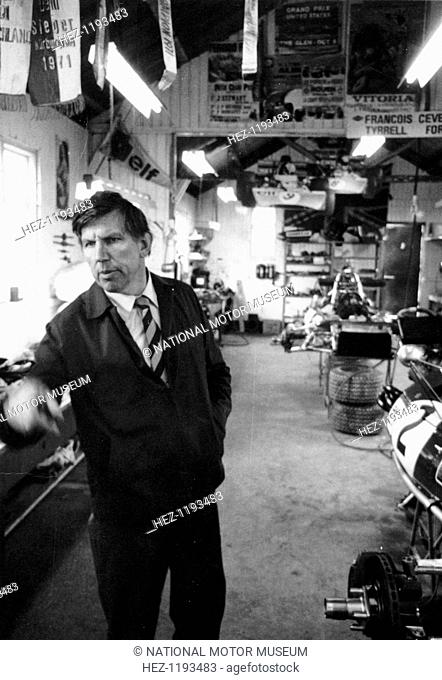
Among the team principals of Formula 1 he was absolutely the most solid. Robert Kenneth Tyrrell once had been a woodcutter and also a timber merchant. As a result, he was sometimes known as "Chopper". The forest had influenced him, the War surely and also his first great passion in sport, football. Twelve times he had been a flight engineer of The Royal Air Force attacking Nazi-Germany. In the giant Lancaster bombers, that have destroyed the cities of Dresden and Kassel nearly completely, but who knows, how long World War II would have taken. Later the air-field of Thruxton and Silverstone, needed anymore, were turned into race tracks very quickly. For Queen and country from now on it was served another way. “Racing for Britain” became a national duty in the fourties and fifties.
He always felt happiest at the Swedish and Austrian GPs. Both the Scandinavian Raceway and the Oesterreichring are surrounded by forests.
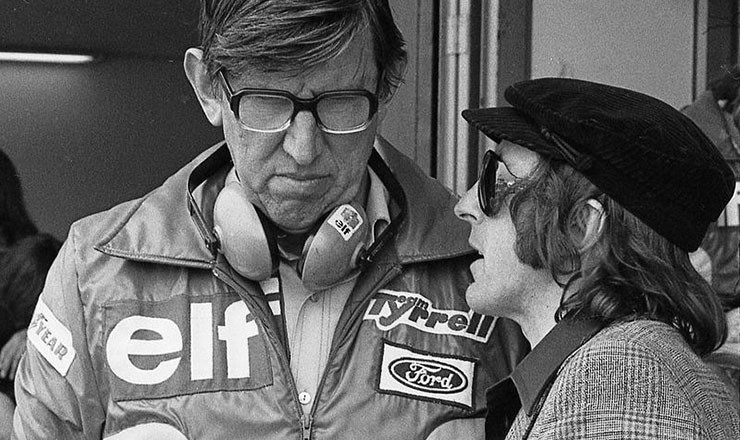
Ken Tyrrell with Jackie Stewart. F1-history.deviantart.com.
Tyrrell was the driving force behind three-time world champion Sir Jackie Stewart’s success in Formula 1, with each of the Scotsman’s titles coming when working with him.
In 1969, after using a Matra chassis for the first of their title victories, when the French of Matra decided to impose the replacement of the powerful Ford V8 engine with a V12 of their own production, Tyrrell and Stewart decided to terminate the contract. In 1970 the Tyrrell team mounted a March chassis, with which Jackie Stewart won in Spain. Towards the end of the season, Ken built his own car from then on and brought the Tyrrell 001 to its debut, which took part in the last three races of the championship and the first ones of the following one. In 1971, the British designer created the car that would have earned him revenge against his former employer.
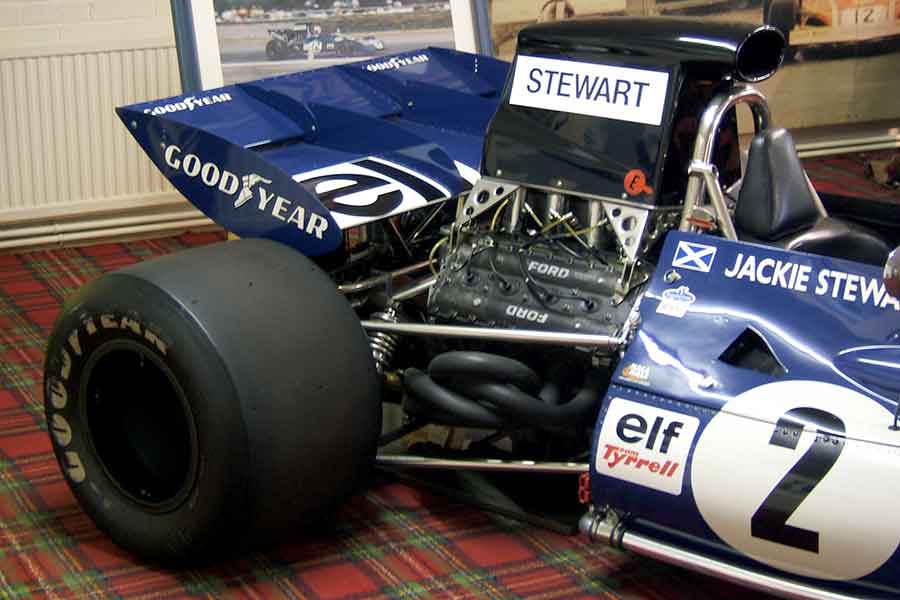
Named 003, it was powered by a Ford Cosworth DFV V8 3.0 power unit, operated by a five-speed Hewland FG400 manual gearbox and featured some innovations such as the aerodynamic front spoiler and several additional air intakes for engine cooling.
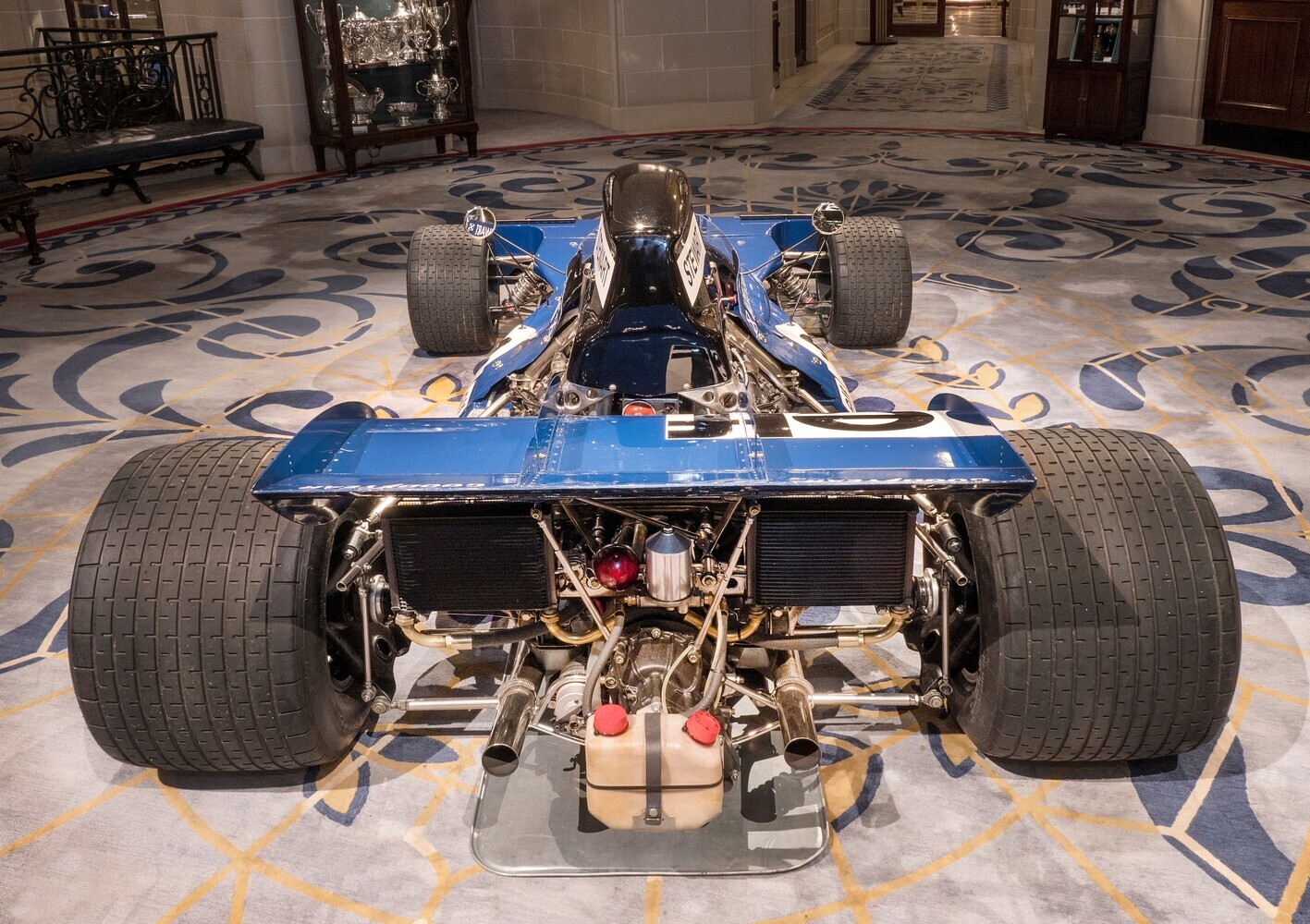
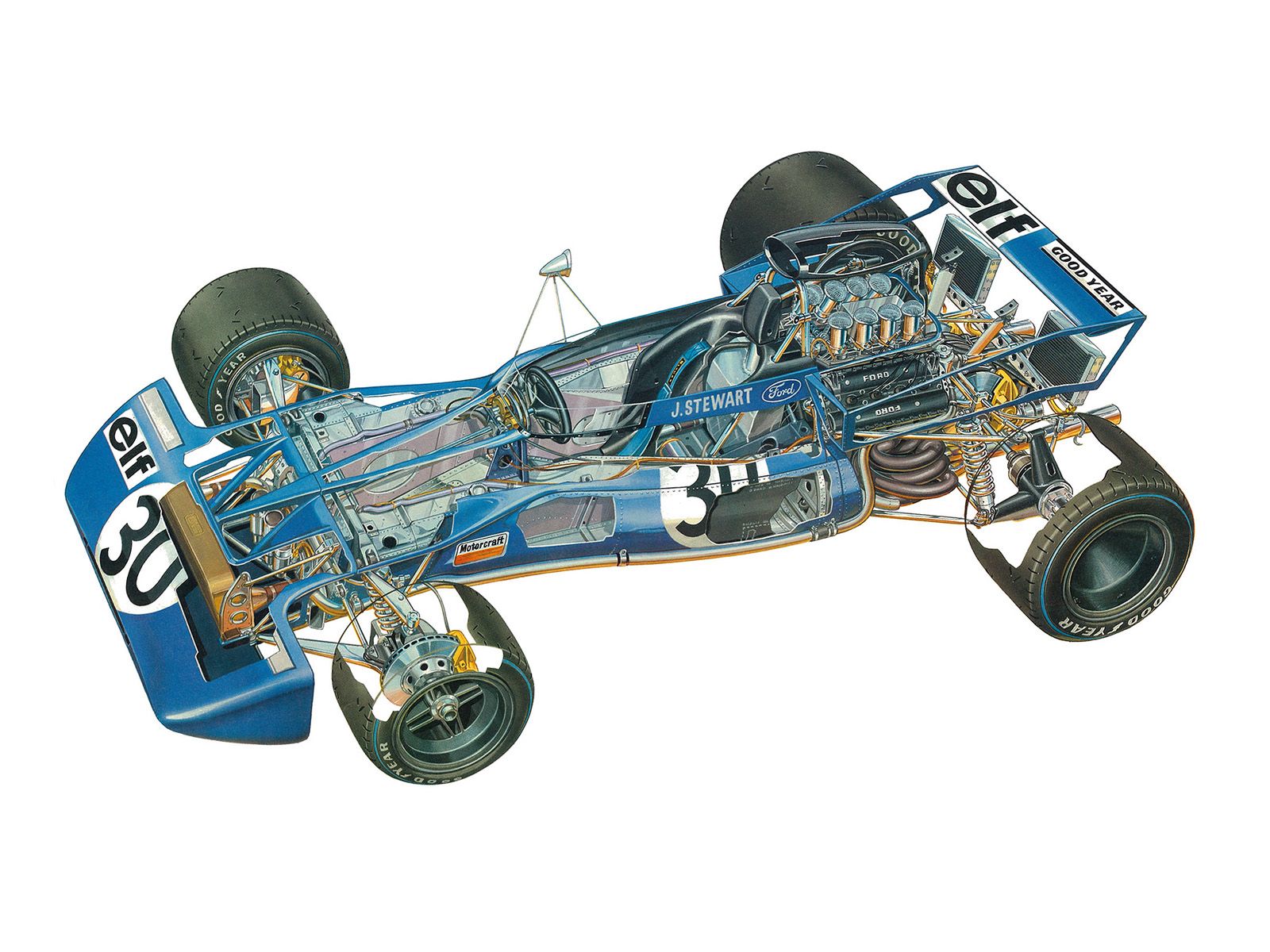
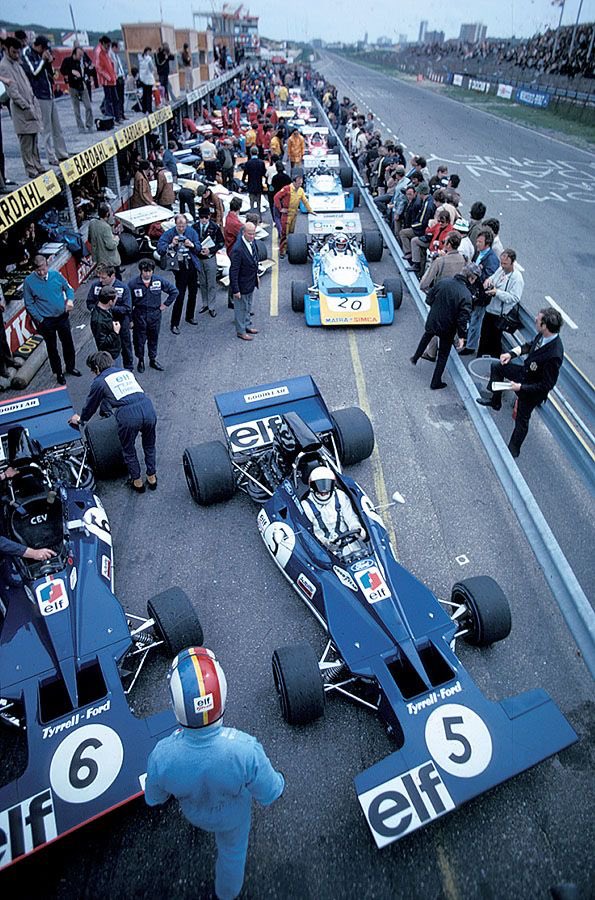
From Stewart’s retirement on, the team failed to attain much success.
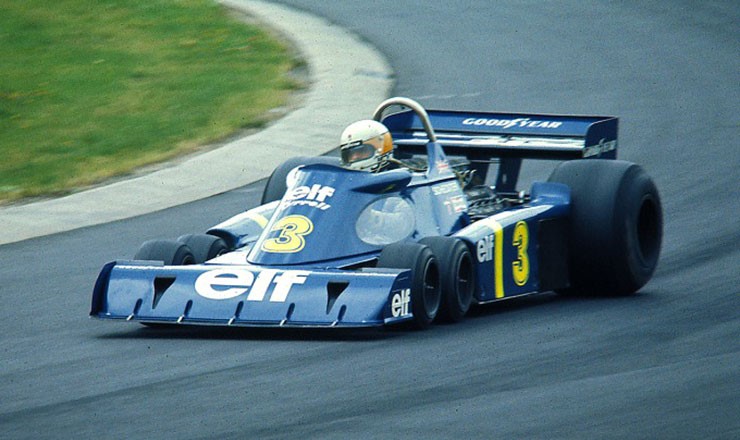
Photo by Wikipedia.
In 1976 Tyrrell, in an attempt to increase top speed while maintaining cornering grip, presented the six-wheeled P34.
The experiment did not give the hoped-for results and the team crisis soon began at the end of the 70s.
At the same time, the main sponsor ELF also decided to leave the English squad to concentrate its efforts on the two French ones: Ligier and Renault.
The team, by now to the cleaners, still survived thanks to the skills of its founder, able to protect his men from any attack.
A man of a F1 of the time, Tyrrell, also afflicted by the disease, will sell the team to British American Tobacco, finally refusing to lead the squad in the 1998 transition year because he was disagreeing with the decisions imposed by Craig Pollock in terms of drivers. A 'tough' man, until the end.
Saturday, the 25th, August 2001 in Europe was one of the last hot summer days. The world was confronted with a message of death coming from East Horseley, a little village in the English county of Surrey. Ken Tyrrell died from pancreatic cancer at the age of 77. The legacy that he left in Formula 1 was huge, having played such an important part ever since the late 1960s.
No doubt, this man was a moral institution until his end.
“If you are straight forward with the drivers you don’t have that sort of working relationship that the job requires and you won’t have a team.” Ken Tyrrell
Legends - Ken Tyrrell. Nigel Roebuck.
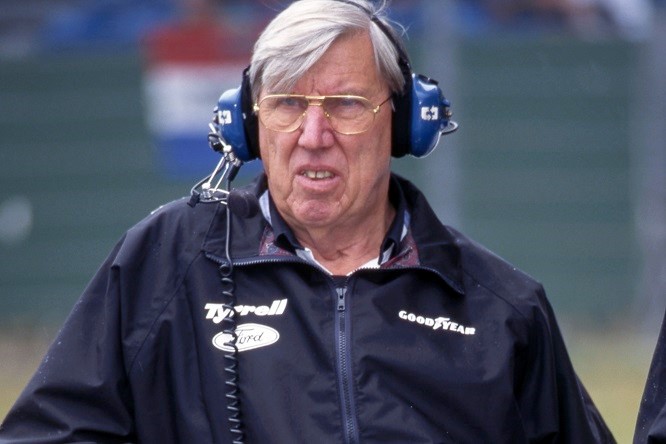
“In a time when motor racing was conducted with integrity and passion, one unique character graced the stage of Formula One. His name was Ken Tyrrell.”
The narrator’s opening words set the tone of a fine new film about a man whose achievements, it seems to me, have always been curiously under-documented. It has been made by Mark Stewart Productions and no company could be better placed for such a project than one owned by the younger son of Jackie, most celebrated of all Ken’s drivers.
I have watched “Tyrrell – Surviving Formula One” several times now, in rapture. They tell me it will be shown on ITV2 in the near future and will also shortly be available on videotape. It is not to be missed. Despite entreaties from many of us, Ken Tyrrell has always refused to countenance an autobiography – “No, no, I can’t be bothered with all that…” and the film gives some considerable impression of what we have missed. Ken and his wife Norah contribute much to it and there are reminiscences and observations from such as JYS, Jody Scheckter, Martin Brundle and Walter Hayes.
Tyrrell begins by relating how he failed at everything in his youth, including an attempt to join the RAE “But then I got lucky,” he says, “because the war broke out and then the RAF would take anyone…”
After the war, with his ‘demob’ suit and his £25, he and some pals took a trip to Silverstone and that first sight of motor racing was enough to ignite a lifetime’s obsession. When it comes to a pure love for the sport, Ken belongs with Frank Williams and Mario Andretti.
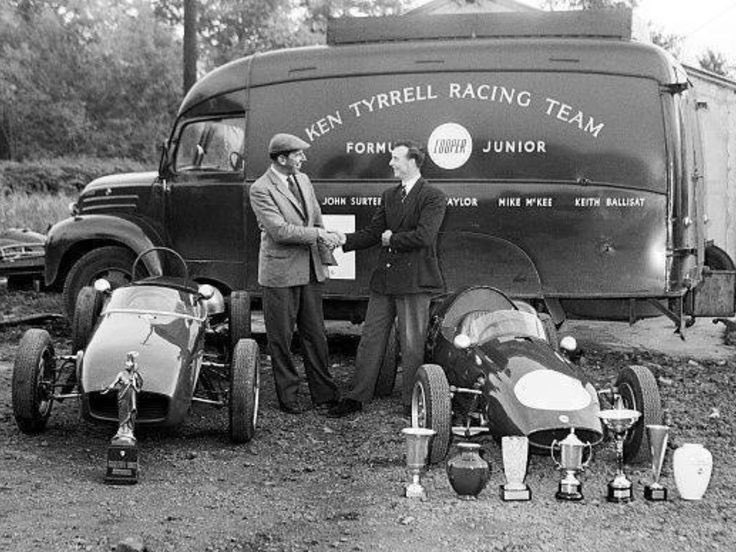
He raced with some success himself, but his great strength lay in team management and, in 1960, the Tyrrell Racing Organisation was founded. What really changed his life, though, was a call from the track manager at Goodwood one day in 1963. A young Scot was testing there and it was worth taking a look at him.
Thus Ken Tyrrell met Jackie Stewart and a test in one of the team’s Formula Three Coopers was organised. Bruce McLaren, then leading Cooper’s Grand Prix team, was on hand to set a ‘target’ time in the car, but Stewart beat it almost immediately. Out went Bruce again quicker still; Jackie responded. At the end of the day the novice was the quicker of the two.
“John Cooper said to me, ‘that boy’s good – get him signed up, Tyrrell remembers. “So we did…”
In Ken’s Coopers, JY Stewart dominated F3 in 1964, most significantly winning at Monaco, in those days closely watched by GP team owners. Remarkably, there is footage of this event, shot on a home-movie camera by Jackie’s wife, Helen.
The following season Jackie was Graham Hill’s team-mate at BRM and, by the end of it, had won his first Grand Prix. He stayed with the team for three, increasingly frustrating, years and, by the end of 1967, was on the verge of joining Ferrari.
Stewart had, however, continued to drive in Formula Two for Tyrrell, which had begun an association with Matra. “Ken said, ‘don’t go to Ferrari – drive for me instead’. I said, ‘Ken, you don’t have a Formula One team’. He said, ‘No but what if we did?'”
Thus the legend got rolling. What Tyrrell had in mind was a Matra chassis with a Ford DFV engine and, obviously, it was in Ford’s interests that Stewart should race with, rather than against, them. When Ken asked Walter Hayes to guarantee Jackie’s salary – £20,000 – he did so without hesitation.
What is more, Tyrrell points out, the deal with Stewart was based on a handshake. “Nowadays, it would probably cost you £20,000 in lawyers’ fees just to have the contract drawn up.” It speaks volumes for Jackie’s faith in Ken that he was prepared to throw up the chance of Ferrari, but undoubtedly part of the attraction lay in the DFV, which had been streets better thananything else in its maiden season, 1967. “Can you imagine,” he says, “going out and buying a Formula One engine for £7,500? Nowadays, a team’s engine budget can be £12,000,000.”
Some wonderful footage is on offer, not least of the Nurburgring in 1968. So heavy was the rain, so thick the mist, that Jackie truly believed the conditions too bad for racing and his employer – for the first and last time – was obliged to make a driver get into the car. Stewart then won the German Grand Prix. By “four minutes”.
The first of Jackie’s three World Championships came the following year, in the Matra MS80, which remains his favourite of all the cars he ever raced. And the sight of the blue car sliding through the swerves in Mexico is enough to make you curse anew the advent of downforce.
When Matra opted for their own V12 for 1970, it meant a sad parting with Tyrrell, who remained rightly convinced of the DFV’s superiority. Everyone lost: Ken was obliged to run the utilitarian March 701 and if Stewart won but a single Grand Prix, it was one more than Matra.
Clearly, the only way for Tyrrell to go was to design and build their own car and in 1971 – its first full season – with the 003 they won both the drivers’ and constructors’ championships.
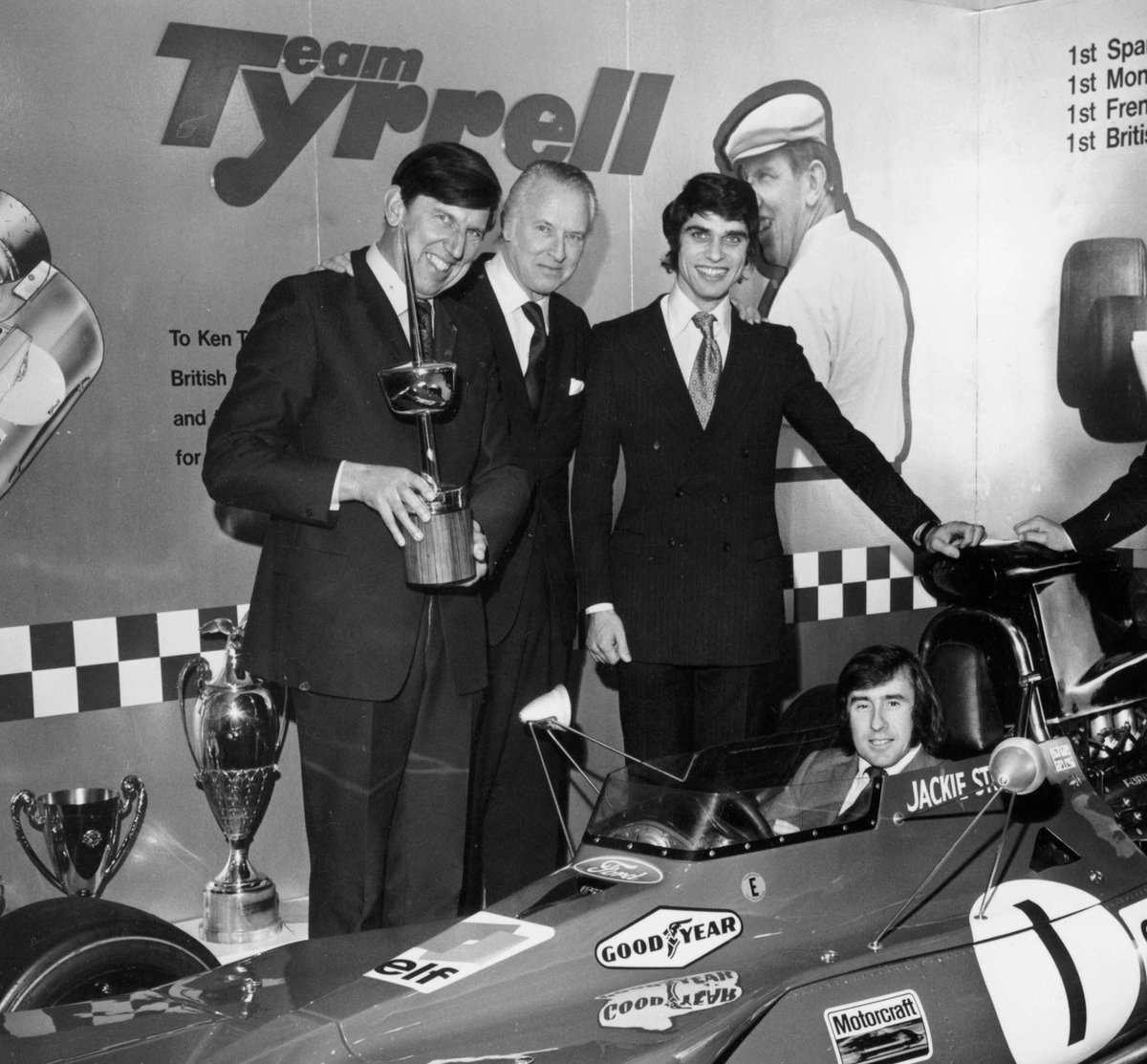
Francois Cevert, son of a Jewish jeweller of Russian origin whose name was Charles Golbenberg, born in the Nazi-occupated Paris and for that reason, in fear of the Gestapo, registered under the maiden name of his mother.
Not surprisingly, Francois Cevert features strongly. He was, on the face of it, the racing driver who had everything: immense natural talent, strikingly good looks, charm. Cevert and Stewart became close friends and it says everything about Jackie that he held nothing back from Francois – indeed helped him in any way he could. Quite clearly, when JYS decided to call it a day, Tyrrell had a driver ready to take over as number one. Cevert, without a doubt, was a potential World Champion.
“Francois was a very handsome, young man. The girls couldn’t resist him.” Ken Tyrrell.
“The number of ladies, my goodness... He was terrible.” Jackie Stewart.
In fact, Jackie made up his mind to retire at the end of 1973. It was another season of triumph for Tyrrell, the highlight being a dominant 1-2 at the Nurburgring, which was Stewart’s 27th and last, victory.
Watkins Glen, the final race of the year, looked like rounding off his career to perfection. Already confirmed as World Champion, the American race would be the 100th Grand Prix of his career, but sadly he was not to start it, for Cevert was killed in qualifying.
Scheckter, due to be Francois’s team-mate in 1974, was first on the scene. “I jumped out and tried to do something…” he says, but then he can speak no more. Devastated by the tragedy, Tyrrell almost gave up motor racing on the spot.
This was an exceptionally perilous time to be a racing driver and the film does not pretend otherwise. “In my world,” Stewart says, “there was… death.” He retired at 33 and if he were still emphatically the best driver in the world, unquestionably the time was right.
After his retirement, the Tyrrell team never reached such heights again. There were fine drivers over the years – Jody Scheckter, Patrick Depailler, Ronnie Peterson, Didier Pironi, Michele Alboreto and occasional victories continued until 1983, when Alboreto won in Detroit. This was Tyrrell’s last win and also, fittingly, the last for the Cosworth DFV.
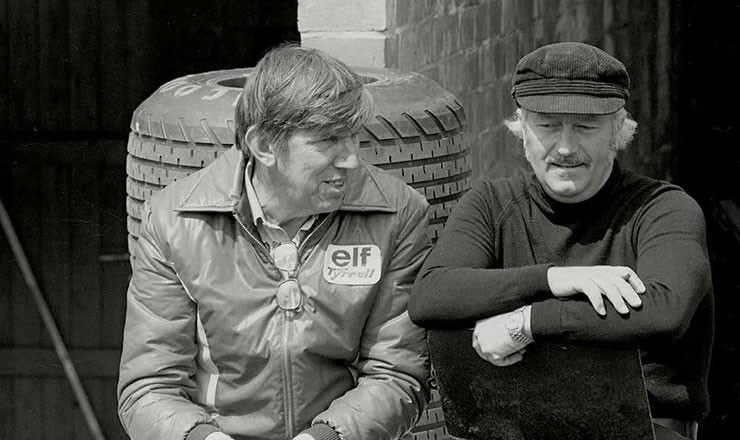
Ken Tyrrell & Colin Chapman. Photo by Wikipedia.
Like other British team owners, Ken was fundamentally opposed to the advent of turbocharged engines in Formula One; unlike the rest of them, he remained so. By 1984, only Tyrrell continued with a normally aspirated engine (the DFV, naturally) and, ultimately, was struck from the World Championship, following accusations of cheating.
“They said we were carrying lead ballast that wasn’t properly secured,” Ken says, denying absolutely that such was the case. Martin Brundle was his number one driver at the time. “It wasn’t a cheating issue – it was a political issue and we all knew it.”
Had Tyrrell been hounded out because of his opposition to the turbo? “My vote only counted if I was in the championship,” Ken says, a tight smile on his face. “Draw your own conclusions…”
Max Mosley smoothly suggests that it might have been “prudent” for Ken to withdraw his opposition (in other words, to sacrifice his principles), but adds that, had he been the kind of man to do so, he might never have had success in Formula One.
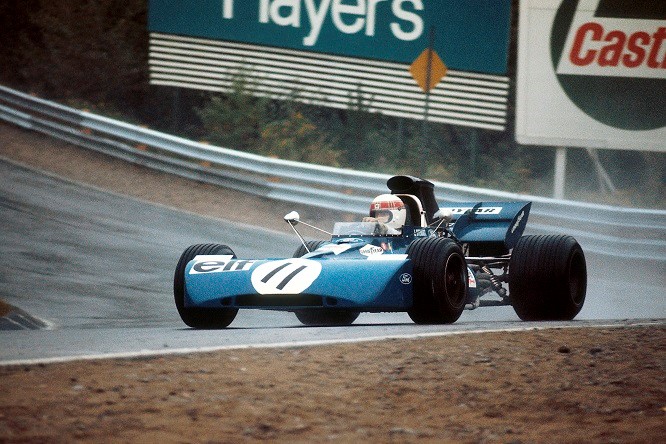
True enough. Jackie Stewart’s parting words sum up the feelings of a great many of us: “this sport would be better by a million miles if there were more Ken Tyrrells in it. He was so much more than a team manager or team owner, in his time he was simply the best.”
The day Uncle Ken bowed out of F1. 02 December 2019.
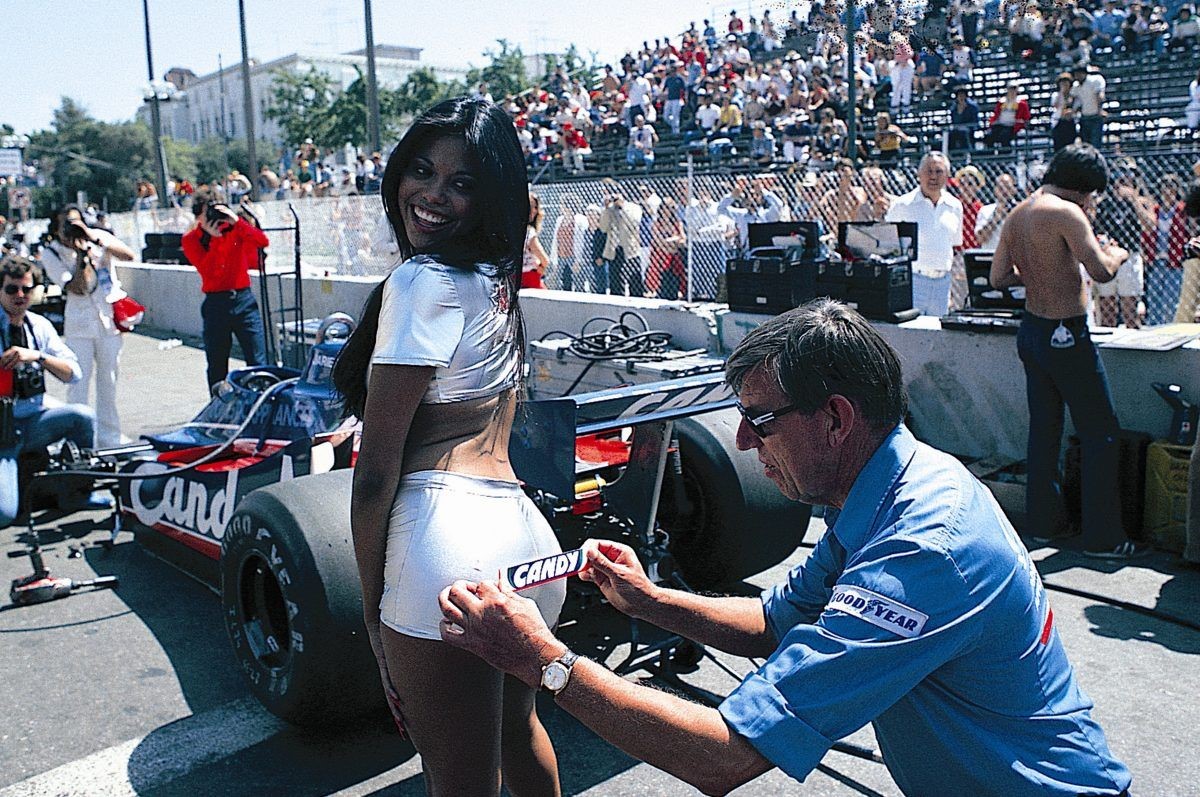
It was in 1997 that news emerged that Ken Tyrrell was to depart Formula 1 after selling his eponymous race team.
Tyrrell Racing had been a fixture of the world championship for over three decades. It made its maiden appearance at the 1966 German Grand Prix with drivers Jacky Ickx and Hubert Hahne and embarked on its first full season in 1968. Jackie Stewart spearheaded the campaign and claimed three wins that year.
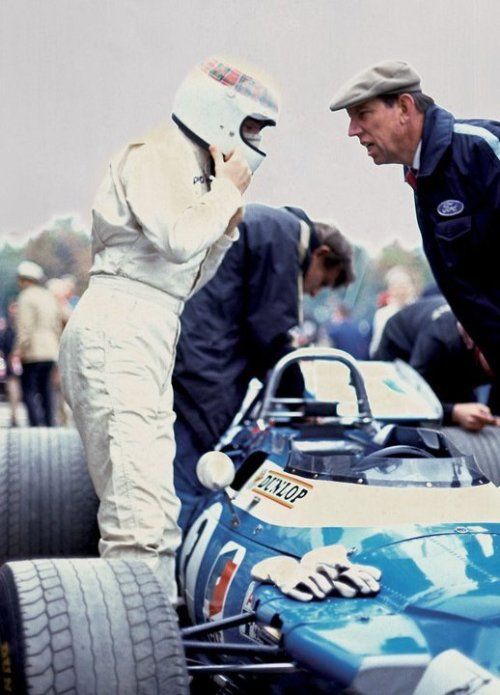
Stewart stayed with the team until 1973. Together they won the drivers and constructors championships in 1971, with Stewart winning six of the 11 races that year. Stewart went on to win two more titles. The team was runner-up in the following two seasons, and third in 1974 and 1976.
The team went into decline after that. Its low point came in 1984 when they were disqualified after having been deemed to have dodged rules about their car's minimum weight.
Other drivers to follow Stewart at Tyrrell included Jody Scheckter, Ronnie Peterson, Didier Pironi, Eddie Cheever, Michele Alboreto and Danny Sullivan. Martin Brundle was a Tyrrell driver between 1984 and 1986. Others in the Tyrrell team colours included Jonathan Palmer, Jean Alesi, Mika Salo, Mark Blundell and Jos Verstappen.
However, by the end of 1997, Ken Tyrrell himself decided it was time to call it a day. The Tyrrell F1 team was sold to British American Tobacco and Craig Pollock to create British American Racing, with the news breaking on December 2. Tyrrell called it "the most difficult decision I've ever had to take."
However, it's legacy was upheld by those who took on Tyrrell's competitive spirit. From BAR, the team evolved into Honda, then Brawn, winning the world championship with Jenson Button in 2009 before it settled on its current iteration as the mighty Mercedes squad.
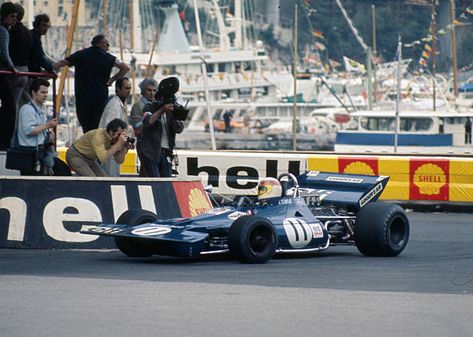
The news threw Jackie Stewart into the deepest sadness: "I am sorry to know about Ken's retirement - he said - I will miss him very much. He has been on the scene since my debut and has made an immense contribution to motor sport. He has launched more drivers than anyone else. Motor sport owes him deep gratitude. Without himI would never have become a F1 driver, nor the Jackie Stewart that people know".
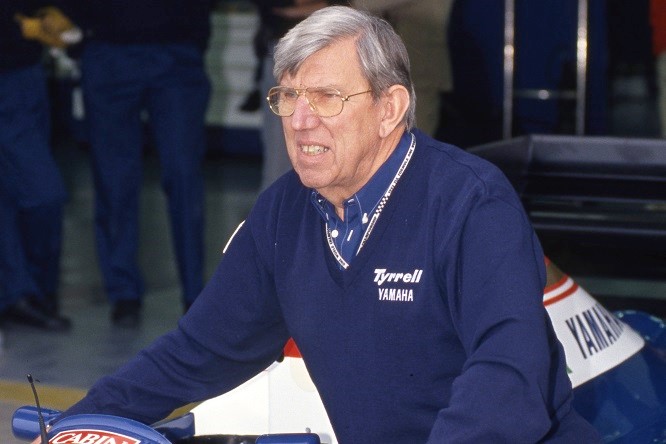
Robert Kenneth Tyrrell, 3 May 1924 – 25 August 2001, was a British Formula 2 racing driver and the founder of the TyrrellF1 constructor.
Born in East Horsley, Surrey, Tyrrell served in the Royal Air Force during World War II. In 1952, at 28, he began racing a Norton-powered Cooper in 500 cc (31 cu in) Formula 3. In 1958, he advanced to Formula 2 in a Cooper-Climax, joining Cecil Libowitz and Alan Brown. He achieved a number of good placings and the occasional win.
Realising, however, that he was not going to reach the top and recognising that his talents were better suited to team management, Tyrrell stood down as a driver in 1959 and began to run the works Cooper Formula Junior team, using the woodshed owned by his family business, Tyrrell Brothers, as a workshop. By 1961 he was also managing the Mini Coopers, as well as deputising for an injured John Cooper in Formula One.
Recognizing the value of the new CosworthDFV, after a Lotus win at Zandvoort in its debut in 1967, with financial help from Elf, Dunlop and Ford, Tyrrell achieved his dream of moving to F1 in 1968, as team principal for Matra International, a joint-venture established between Tyrrell's own team and the French auto manufacturer Matra. He persuaded Matra that a DFV was good insurance against the possible failure of Matra'sV12 and thus the Matra MS10 was the result.
Stewart helped the new team to place second in the Constructors' Championship for 1968.
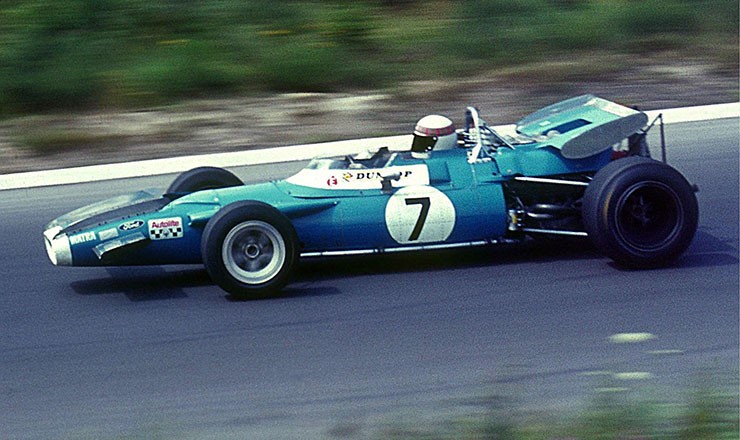
Jackie Stewart 1969 Matra Ford. Photo by Wikipedia.
The success led to Matra's Gérard Ducarouge and Bernard Boyer creating the DFV-powered Matra MS80 for 1969, driven by Jean-Pierre Beltoise and Stewart, who won his first World Drivers Championship.
During his early years in F1, "Uncle" Ken, as he was often known, reached the peak of his career.
The 006, with its tall airbox, appeared in 1973 and was better than the 005.
With the death of Cevert and the departure of Stewart, Tyrrell in 1974 hired Scheckter and Patrick Depailler and Gardner designed the less-twitchy 007. It was good enough for Scheckter to place third in the World Championship and for Depailler to be ninth in his rookie season and for the team to continue to campaign the car during 1975. In the following years, the Tyrrell team slipped down the rankings to mid-field, despite having employed natural talents such as Scheckter, Depailler and Ronnie Peterson, as well as lesser lights like Jean-Pierre Jabouille, in a third 007 in 1975.

Jody Scheckter, Tyrrell, in action.
Still, Tyrrell found the time to introduce new concepts for F1. In 1976, the Tyrrell team created the six-wheeled P34, with four front wheels. The Gardner-designed single-seater achieved a race victory but it was abandoned after Goodyear refused to develop the small tyres needed exclusively for the car as it would detract from the efforts in the ongoing tyre war with other tyre manufacturers.
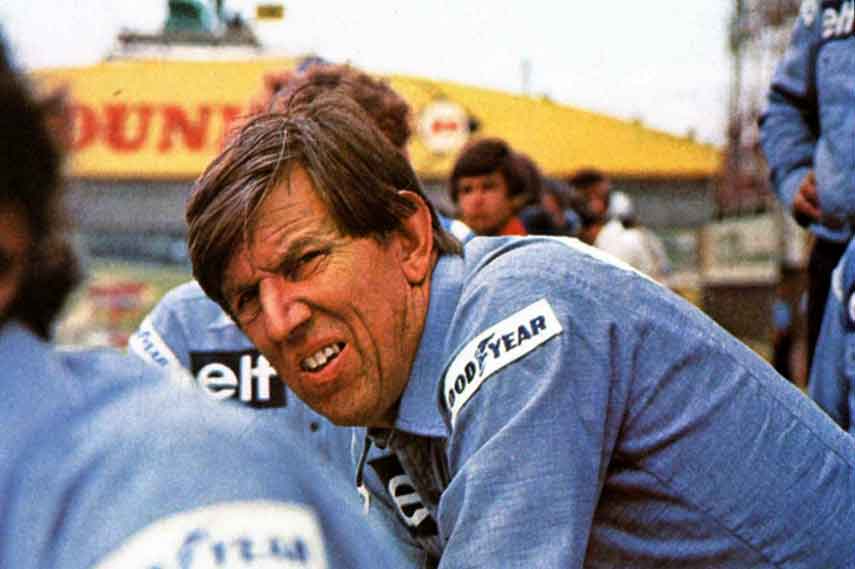
In the early 1980s Tyrrell's fortunes declined to the point where he had to run his team without sponsorship.
In the early 1990s Tyrrell relinquished much of the company's control to his sons and to Harvey Postlethwaite, who was the first to introduce the high-nose concept in the 1990 Tyrrell. Jean Alesi scored two-second places in the car and the team led a lap for the last time. Their final podium finish was in 1994 with Mark Blundell and their final points at the 1997 Monaco Grand Prix, with 5th position from Mika Salo.


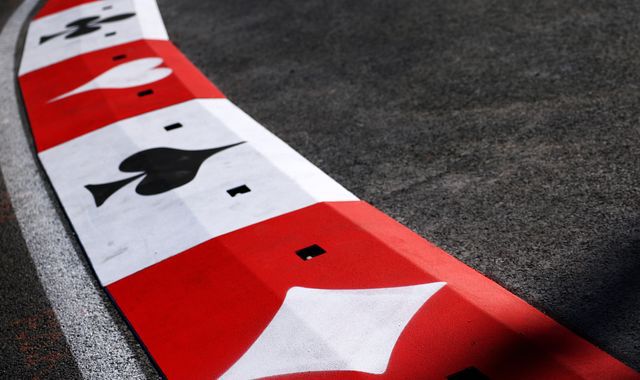
Comments
Authorize to comment